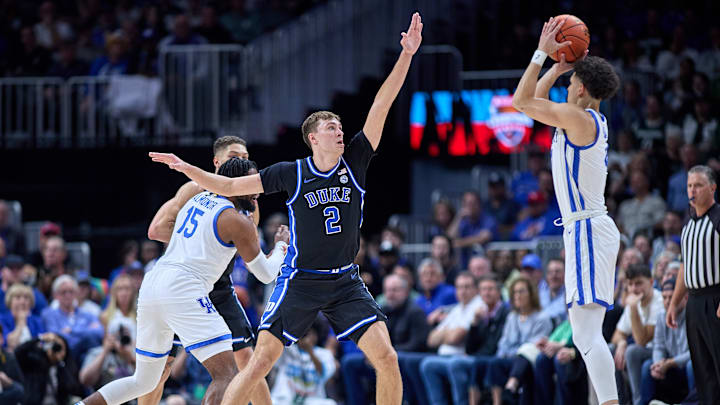Recent data from Sports Media Watch reveals a concerning trend in basketball viewership: NBA ratings are down 19%, men’s college basketball is down 21%, and women’s college basketball has seen a 38% drop. While early-season games and football's dominance may partly explain this, deeper issues in how the game is played today also contribute. And then of course the Caitlin Clark effect, as the WNBA saw their ratings jump 170% compared to 2023, according to ESPN.
It has been reported that the NBA ratings are down 28% this year alone. Suggestion, bring back hand checking and more physicality. The players are too strong, too quick, and have become amazing shooters.
— Rick Pitino (@RealPitino) December 18, 2024
In the NBA, the explosion of three-point shooting—jumping from 15.8 attempts per game in 2004-05 to 37.5 in 2024-25—has redefined the sport. That is more than double in 20 years time. While it creates more team-oriented basketball, sometimes it doesn't have the same star power as Jordan did.
This is honestly pathetic. 108 threes in a basketball game. No words. NBA is BROKEN. pic.twitter.com/lBtrcx2NbY
— Adam Pedersen (@TheRealP_Unit) December 20, 2024
Critics point to the lack of defense, load management, and minimal player effort during the regular season as reasons for declining interest, and that probably is more to blame. The league's best action often doesn’t surface until the playoffs, leaving many regular-season games feeling like glorified scrimmages. The 3-point barrage is not helping draw in viewers though, that is easy to see. But if this had come off good offense, maybe it helps? There is far too many plays like this:
Exhibit 2394 why NBA ratings are down 😭 pic.twitter.com/anBpvh4ZCJ
— BricksCenter (@BricksCenter) December 21, 2024
For college basketball, the decline may stem from a lack of marquee matchups early in the season. Once conference play begins, ratings will probably begin to stabilize. However, the question arises: is Kentucky basketball’s style under Mark Pope indicative of where the sport is heading, and does it help or hurt the program as a whole, and what does it do for ratings?
Requires some timing, but "Kentucky" is money for overloading the baseline against a 2-3 or 3-2 zone
— Matt Hackenberg (@CoachHackGO) November 20, 2024
The defense commonly is stuck between defending either the corner OR the tight curl, but often can't cover both well pic.twitter.com/GlHuN7hpV3
Pope’s offensive system thrives on precision, ball movement, and three-point shooting. Much like Gregg Popovich’s legendary Spurs teams, Kentucky’s offense emphasizes unselfishness, cutting, and constant ball rotation to create open looks. Yet Pope’s Wildcats have taken this approach to new heights, shooting 28.3 threes per game this season, hitting 38.5%—a mark that ranks in the top 10 nationally. The team’s ability to blend modern strategy with the passion of college basketball makes for compelling viewing, especially for fans of Kentucky’s storied program. But it may be driving away the casual viewer that used to be lured in by star power.
Manu Ginóbli was a great off ball player, one of his best qualities was his extra passing which generated tons of open looks for the Spurs. pic.twitter.com/wW9Svb9biE
— YD (World Series Champion) (@MondgreenG) April 17, 2021
Unlike the NBA, college basketball retains a sense of urgency and emotional intensity, particularly at places like Rupp Arena or Cameron Indoor. The question remains whether Kentucky’s cutting-edge approach will keep fans engaged long-term or if basketball’s overall direction will continue to push viewers away.
